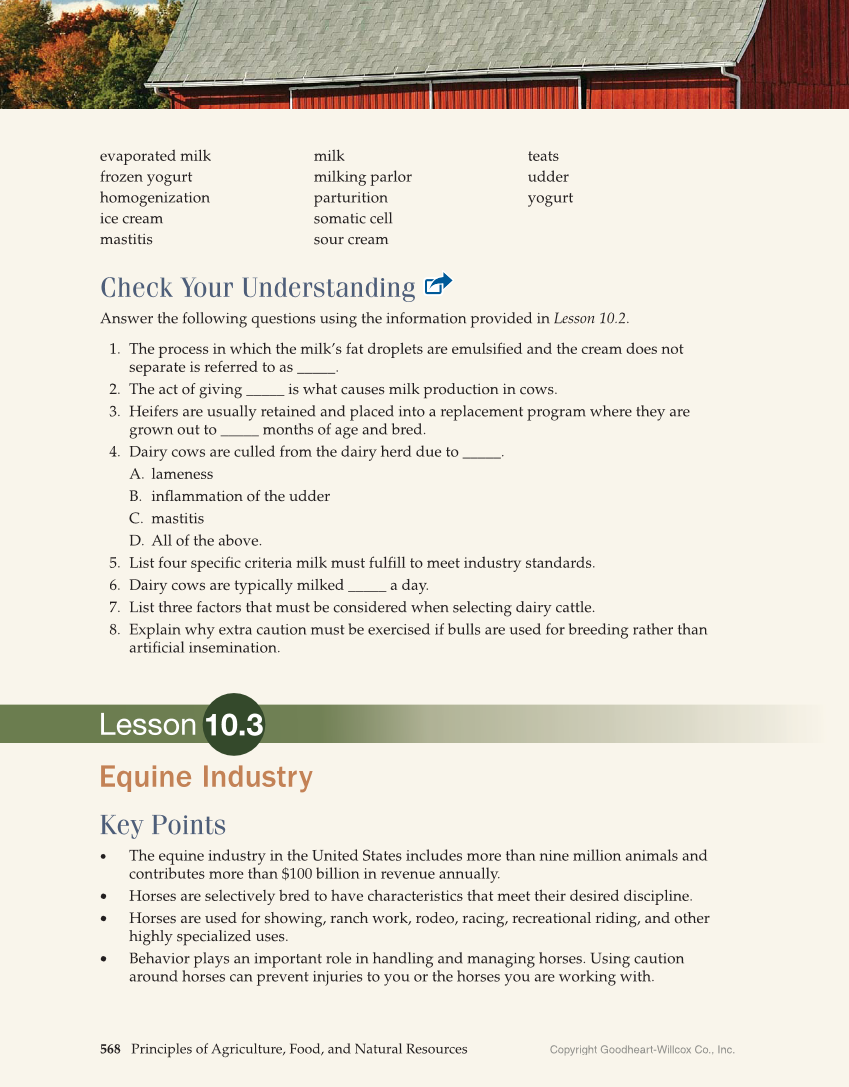Copyright Goodheart-Willcox Co., Inc. 568 Principles of Agriculture, Food, and Natural Resources evaporated milk frozen yogurt homogenization ice cream mastitis milk milking parlor parturition somatic cell sour cream teats udder yogurt Check Your Understanding Answer the following questions using the information provided in Lesson 10.2. 1. The process in which the milk’s fat droplets are emulsified and the cream does not separate is referred to as _____. 2. The act of giving _____ is what causes milk production in cows. 3. Heifers are usually retained and placed into a replacement program where they are grown out to _____ months of age and bred. 4. Dairy cows are culled from the dairy herd due to _____. A. lameness B. inflammation of the udder C. mastitis D. All of the above. 5. List four specific criteria milk must fulfill to meet industry standards. 6. Dairy cows are typically milked _____ a day. 7. List three factors that must be considered when selecting dairy cattle. 8. Explain why extra caution must be exercised if bulls are used for breeding rather than artificial insemination. Lesson 10.3 Equine Industry Key Points „ The equine industry in the United States includes more than nine million animals and contributes more than $100 billion in revenue annually. „ Horses are selectively bred to have characteristics that meet their desired discipline. „ Horses are used for showing, ranch work, rodeo, racing, recreational riding, and other highly specialized uses. „ Behavior plays an important role in handling and managing horses. Using caution around horses can prevent injuries to you or the horses you are working with.
